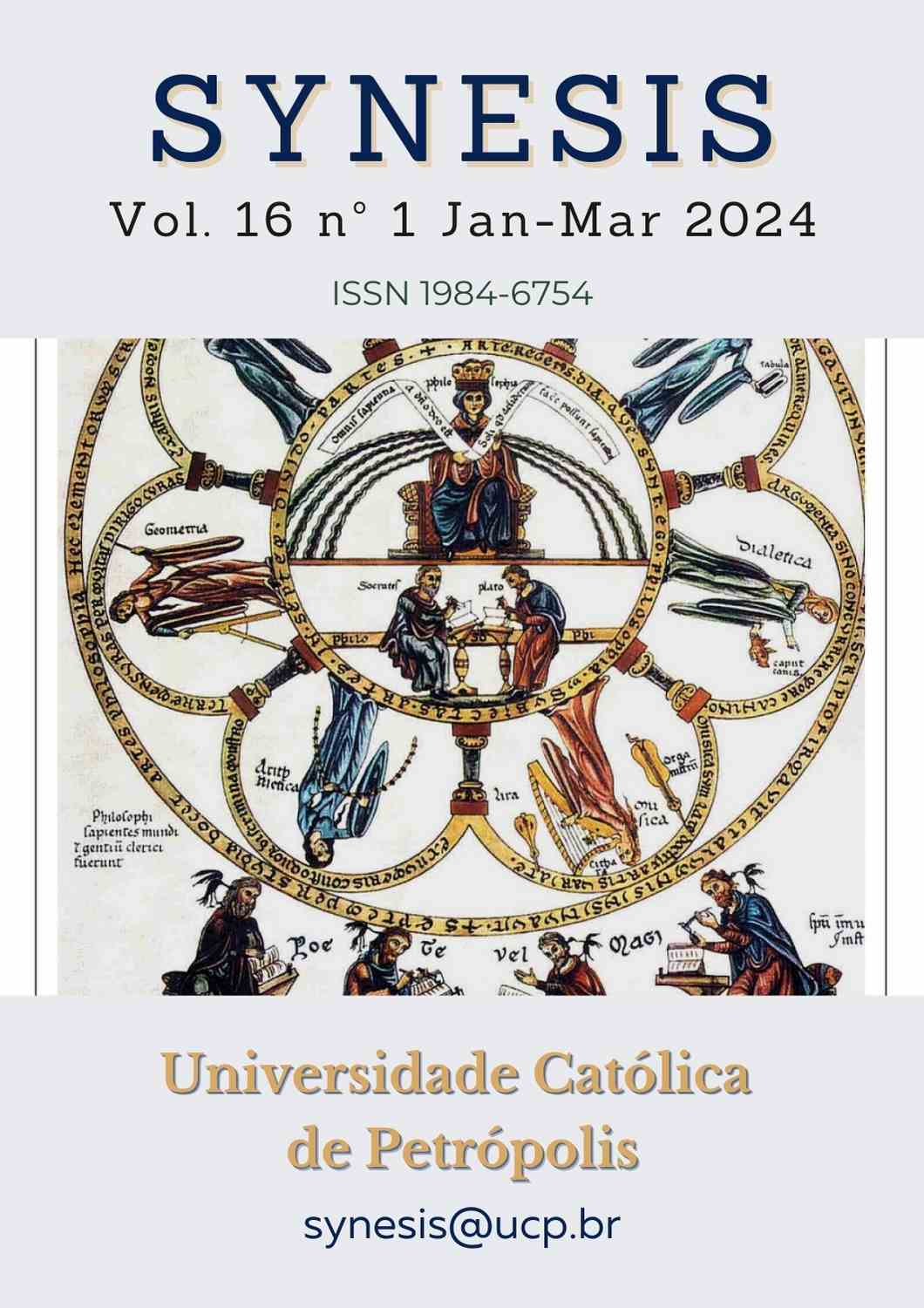Resumo
O artigo apresenta uma análise abrangente da natureza transformadora do complexo religioso e artístico no contexto das práticas de culto, destacando seu papel como um sistema integrado estável por meio de uma lente filosófica e religiosa. Tanto a arte quanto a religião são caracterizadas como manifestações entrelaçadas de consciência social e instituições sociais. A estrutura conceitual explora a noção de um sistema sacro-ideológico dentro do complexo artístico-religioso, investigando seu significado no cristianismo como um todo e em várias denominações. Esse sistema desempenha um papel crucial na formação da distinção e da natureza "carismática" dos comportamentos religiosos no cristianismo. Evidências empíricas apóiam a afirmação de que, independentemente das formas artísticas específicas empregadas nas práticas religiosas cristãs, a arte é utilizada para reforçar a influência dos ensinamentos da igreja. É digno de nota o fato de que a sacralidade inerente à religião não é apenas ampliada por meios artísticos, mas também gerada pelo próprio componente artístico. Essa adaptação do elemento sagrado estático da arte religiosa cristã aos desafios dinâmicos e em constante evolução do mundo serve para aumentar sua sacralidade. Além disso, o estudo estabelece que o componente artístico da adoração religiosa cristã, atuando como portador de significados sagrados, transforma a natureza estática dos serviços divinos em um processo vívido, simbólico e dinâmico no contexto das atividades do templo. As descobertas do estudo indicam que a sacralidade, que serve como uma característica definidora da religião, não é apenas aprimorada pela arte, mas também gerada pelos próprios componentes artísticos. Esse processo de adaptação permite o ajuste da natureza estática dos elementos sagrados dentro da arte religiosa cristã para responder efetivamente às demandas impostas por um mundo dinâmico e em constante mudança. Além disso, a pesquisa estabelece que o componente artístico do culto religioso cristão serve como um canal para o conteúdo sagrado durante as atividades do templo. Ele facilita a transformação de práticas litúrgicas estáticas em processos vibrantes, tangíveis e dinâmicos, elevando-as, assim, a um nível qualitativamente novo no âmbito da cultura social.
Referências
Abramovich, S. D. (2005). Church art. Kyiv, Condor.
Augustin, B. (2013). Daoism and Daoist Art. Available at: http://www.metmuseum.org/toah/hd/daoi/ hd_daoi.htm
Bodak, V. (2005). Religion and culture: mutual influence and interaction. Kyiv, Kolo.
Bodak, V. A. (2005). Theological understanding of the problem of religion and culture: the Christian context. Multiverse. Philosophical almanac, 50. Available at: www.filosof.com.ua
Buenconsejo, C. (2015). Contemporary Religious Art. Available at: https://web.archive.org/web/20150929011640/http://blog.mozaico.net/contemporaryreligious-art
Demidko, O. (2021). History of Fine Art and Architecture. Kyiv, Lira. Available at: https://repository.mdu.in.ua/jspui/handle/123456789/2766
Fed, I. A. (2014). The humanistic and transformative function of sacred art. Multiverse. Philosophical almanac. 44. Available at: www.filosof.com.ua
Halyshich, R. Ya. (2002). Ukrainian church architecture and monumental and decorative art abroad. Lviv, Spolom.
Herchanivska, P. E. (2005). Artistic and Religious Consciousness: The Common and the Distinct. Multiverse. Philosophical almanac. 51. Available at: www.filosof.com.ua
Huntington, S. (2013). The Art of Ancient India. Buddhist, Hindu, Jain. Available at: https://www.google.com/books/edition/The_Art_of_Ancient_India/9g_uDwAAQBAJ?hl=e n&gbpv=1
Kokhanovska, M. (2020). Symbolism of color in Ukrainian icon painting. Wonderful world. Available at: http://dyvensvit.org/cerkva/175-cerkva-statti/2290-symvolika-koloru-v-ukrajinskomu-ikonopysi
Kolodny, A., Lomovyk, B. (Eds) (2006). Religious dictionary. Kyiv, The Fourth Wave.
Melnychuk, M. S. (2013). Suggestive role of art in religion. Humanities studies: coll. of science Drohobyts Ave. state ped. Ivan Franko University, 8.
Melnychuk, M. S. (2013). The phenomenon of the word in the Christian cult. Multiverse: philosopher. alm, 32.
Melnychuk, M. S. (2014). The failure of the "magical" concept of the origin of art. Multiverse: philosopher. alm,40.
Pobozhii, S. I. (2021). History of art: Outline of lectures. Sumy, SDU.
Predko, O. I. (2006). Psychology of religion: formation and establishment of the religious paradigm. Abstract of the dissertation. dock. Philos. of science Kyiv.
Racheeva, L. P. (2016). Religious painting in the system of extraterrestrial art: a cultural and historical aspect. Multiverse. Philosophical almanac, 54. Available at: www.filosof.com.ua
Razumtseva, G. (2017). Moral values of the Ukrainian people and the ritual law of the church in poetic folklore of the 19th century. Ukrainian religious studies, 14.
Shevnyuk, O. L. (2015). Art History: A Study Guide. Kyiv, Education of Ukraine. Available at: http://enpuir.npu.edu.ua/handle/123456789/30160
Shmagalo, R. T. (2013). Encyclopedia of Artistic Culture. Lviv, LNAM.
Shved, Z. V. (2015). Theory and history of religious art in the system of religious knowledge. Sofia. Humanitarian and religious bulletin, 2(4).
Skrypnyk, H. (Ed.) (2006). History of Ukrainian art: in 5 volumes. NAS of Ukraine. Kyiv, Institute of Art History, Folklore, and Ethnology named after M.T. of Rila.
Yakovlev, E. G. (1999). Art and world religions: Education. manual. Kyiv, Higher School.
Yakovlev, E. G. (2009). Art and world religions. Kyiv, Higher School.
Yakunina, K. (2011). Content and functions of religious art. Available at: https://molodyivchenyi.ua/index.php/journal/article/view/1843

Este trabalho está licenciado sob uma licença Creative Commons Attribution-NonCommercial-NoDerivatives 4.0 International License.
Copyright (c) 2023 Synesis (ISSN 1984-6754)

